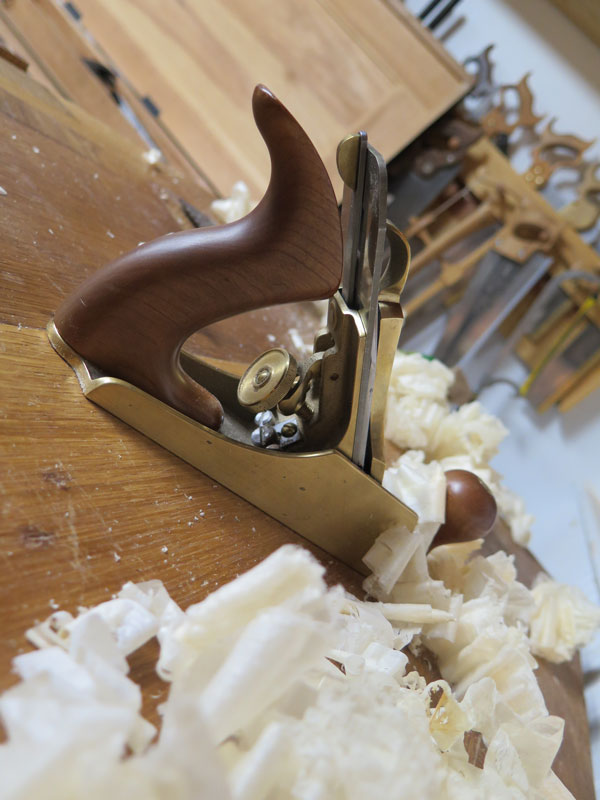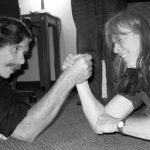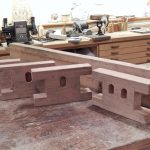We may receive a commission when you use our affiliate links. However, this does not impact our recommendations.
The trick to becoming fast at handplaning is to never pause during stock preparation.
No matter how you prepare your wood for a project (with machines, handplanes or some combination of the two) the biggest mistake you can make is to stop during the process for even an hour. Once you joint and plane the stock, you should take it as far as you can – even if that means smooth-planing parts that still need a little work.
Why? Wood moves and I’ve found that it moves soon after you process it. Sometimes this is because the wood is adjusting to the humidity in your shop, and sometimes it is because the process of stock preparation releases bound-up tension in the fibers of the wood.
Here’s an example: Today I had to prepare some pine stock for shelves that was 7/8” thick. It had to be 3/4”. So I jointed and planed the stock down to 3/4” and began smooth planing the shelves. Then I looked up. It was 5 p.m. and I had to start making Sunday dinner, or I was going to have a grumpy family on my hands.
So I reluctantly put down my plane, knowing full well what was going to happen.
Two hours later, I returned to the shop and resumed smooth-planing the shelves. All the shelves had cupped slightly on the bark side of the board. You couldn’t see it with your eyes. But the plane knew. It took about four or five times as many strokes to get the middle of the bark side of the board planed flat. Luckily the heart side develops a small hump across its width when this occurs, so it’s no problem to smooth plane those quickly.
This is just one example of how you should never pause during certain operations. Here’s another: Edge jointing. As soon as you joint two edges to be glued together, put them together pronto. The edges can distort within the hour, spoiling the joint. Plus, a freshly planed joint always glues better than one that has been sitting around picking up dirt.
— Christopher Schwarz
Here are some supplies and tools we find essential in our everyday work around the shop. We may receive a commission from sales referred by our links; however, we have carefully selected these products for their usefulness and quality.











Chris,
If I move from Columbus to the Cincy area, can I be your apprentice??? Maybe I could talk my wife and daughter into a change of scenery! Haha. I really enjoy reading your articles, even though I am not much of a hand tool worker. I am too inexperienced to get acceptable results using just hand tools. Maybe one day when I grow up, I can be like you.
Kevin
Hi Chris,
If you complete squaring up the board in one “sitting” and then place it on the shelf for later use, won’t it still do its moving. It doesn’t seem that stopping mid-stream results in anything different than you would get doing it all at once and then waiting to use the board.
What am I missing?
Thanks,
Bob
I get it now. I understand about the joint example. I had to think back to an earlier talk I heard you give. You are obviously talking about “needing” a flat surface, and not just a surface that needs to look good.
This may be a dumb question, but does large temperature changes cause wood movement? My garage is unheated unless I am working in it, so swings of 30-40 degrees can easily take place. Perhaps it is just the movement you discussed that is the culprit, but I have yet to try a project that does not have cupped boards(even if only a little). Great advice.
But wouldn’t you want this to happen? If my wood has internal stresses, I’d feel much safer to take a pause and let it settle, rather than having it distort at a later point.